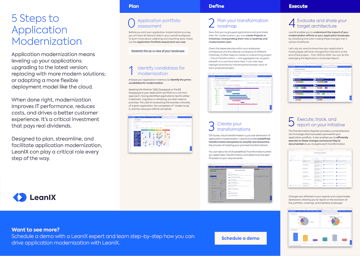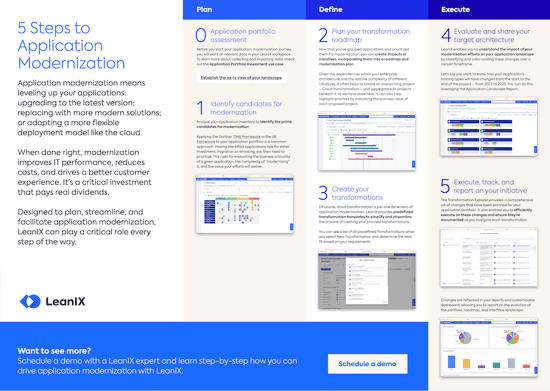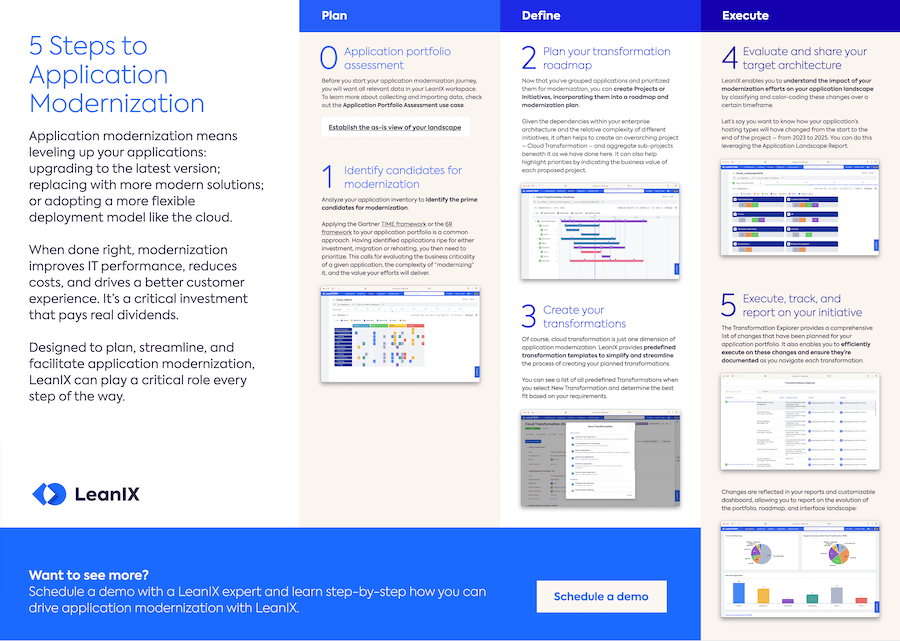Introduction
With the increased adoption of cloud environments, more and more businesses are moving away from on-premise IT solutions and have come to rely on IT infrastructures, platforms, and software offered as a service. But what does that look like in practice and what are the differences between the various service models?
Learn all about IaaS vs PaaS vs SaaS and how they help create a cloud-computing environment that is tailored to your needs. We’ll also take a look at some examples, so you know how as-a-service options integrate into your current IT landscape and what benefits and disadvantages to expect.
What are the differences between IaaS, PaaS, and SaaS?
IaaS, PaaS, and SaaS stand for Infrastructure-as-a-Service, Platform-as-a-Service, and Software-as-a-Service. Each describes a way of how you can use the cloud for your organization. The service models don’t stand in direct opposition to each other but cover a degree of IT management, thus offering an alternative to self-managed on-premise IT solutions.
While traditional solutions require you to manage your own IT infrastructure and in-house software, IaaS provides a pay-as-you-go approach for storage, networking, and virtualization. In addition, PaaS includes even more services like hardware and software development tools available via the web. And with SaaS, you get the highest degree of vendor management by “renting” full software solutions.
The diagram “As-a-Service” below illustrates the differences between IaaS vs PaaS vs SaaS and the level of vendor management that you get with each service model.
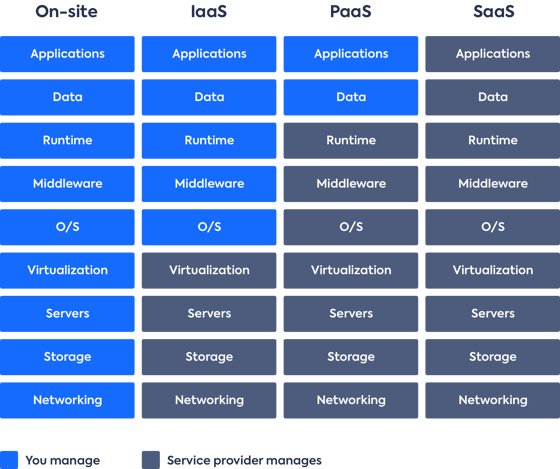
IaaS examples
Below are ten companies that provide IaaS platforms for various business needs (some of them also offer PaaS or SaaS models):
- Amazon Web Services (AWS)
- Google Compute Engine (GCE)
- IBM Cloud
- Microsoft Azure
- Rackspace
- Linode
- Cisco Metacloud
- Digital Ocean
- Vultr
- Oracle Cloud
PaaS examples
Below are ten popular PaaS providers that organizations use to build customized apps for their business needs.
- Google App Engine
- OpenShift
- Heroku
- Force.com
- Windows Azure
- AWS Elastic Beanstalk
- Apache Stratos
- Magento Commerce
- AWS Lamda
- SAP Cloud
SaaS examples
Software-as-a-Service was around even before companies started migrating to the cloud. Best examples are web-based email services like Outlook or Gmail. Below are a few SaaS providers you’ll probably be familiar with.
- Salesforce
- Cisco WebEx
- Dropbox
- ZenDesk
- MailChimp
- Slack
- HubSpot
- DocuSign
- Google Apps
- Microsoft Office 365
IaaS vs. PaaS
Infrastructure-as-a-Service offers you a great deal of control over your operating systems. It is the foundation of your cloud-computing environment. With Platform-as-a-Service on the other hand, you can build apps without having to host them on-premise, so you benefit from more flexibility but get a little less control.
Which service model is best for you, depends on your enterprise’s needs. For example: If you are looking to build a website, an IaaS product like Amazon Web Services can provide the infrastructure for hosting the site and its applications. However, if you want to add custom features, a PaaS product like Google App Engine does not only host your site but also lets your developers design and deploy custom apps.
SaaS vs. PaaS
As described above, Platform-as-a-Service is used as a way to build new products on top of your already existing network. But Software-as-a-Service takes this one step further. SaaS products are entirely managed by the vendor and ready to use by your teams.
So when should you choose a PaaS product over a SaaS product? Example: If you want to create a payroll app that is tailored to your HR needs, Platform-as-a-Service provides all the tools you would need to succeed. Once your product is finished, it can be considered SaaS. However, if you prefer out-of-the-box ease of use, a payroll app like Quickbooks would be the better option.
IaaS vs. SaaS
With a Software-as-a-Service product, you are getting the most service from your third-party provider in terms of software management and maintenance. With Infrastructure-as-a-Service on the other hand, the provider only supplies and maintains core components such as servers or storage.
Which model is best for your business highly depends on what you are trying to achieve. If you need a maximum amount of control within the cloud environment and want to avoid external management data issues that could compromise the functionality or security of your data, IaaS is the best option. However, if you don’t need much flexibility and value ease of use, migrating to a small-scale SaaS solution is the better idea.
Scroll down to learn more about each one.
Infrastructure-as-a-Service (IaaS)
IaaS stands for Infrastructure-as-a-Service. It allows organizations to purchase resources like networking and storage on-demand instead of having to buy costly hardware. IaaS is highly scalable and offers businesses more flexibility than on-premise solutions.
IaaS can be seen as the basic layer in cloud computing. The virtualized components available through the internet are equivalent to the servers and hardware companies would traditionally store in their building.
When to use IaaS?
Organizations of all sizes can benefit from IaaS. Small companies who want to avoid purchasing hardware or don’t have the time, staff, or ability to host large data centers on-premise, as well as larger businesses who want to stay in control of their apps and only want to consume the resources they actually need. The scalability of IaaS is also great for companies that experience rapid growth.
IaaS delivery
With IaaS, enterprises get a full cloud computing infrastructure including network, servers, operating system, and data centers/storage. Full access is granted through virtualization technology via dashboard or API. This way, clients have complete control over their computing infrastructure.
The IaaS provider is responsible for managing and maintaining servers, hard drives, storage, and virtualization tools. However, applications, runtime, OS, middleware, and data still need to be managed by the client.
IaaS benefits
IaaS offers many benefits to companies who want to migrate to the cloud. The most compelling ones are listed below.
- Flexibility: IaaS is more flexible than all the other cloud computing models.
- Automation: With IaaS, you can easily automate the deployment of servers, storage, and networking.
- Cost-reduction: IaaS lets you purchase resources on an as-needed basis, so you only pay for what you’re actually using.
- Control: IaaS lets you retain complete control of your infrastructure.
- Scalability: Since you’re only “renting” IT components, you can easily upscale or downscale your resources.
IaaS disadvantages
IaaS also has some potential drawbacks that you should be aware of before settling on a provider.
- Legacy systems: Before migrating to the cloud, legacy apps might have to be enhanced for the new type of infrastructure.
- Internal training: Staff might have to undergo additional training to effectively manage and monitor IaaS.
- Security: While you are in control over your apps, data, middleware, and the OS platform, you are also responsible for mitigating new security threats.
Platform-as-a-Service (PaaS)
PaaS stands for Platform-as-a-Service. The platform that can be accessed through the internet provides developers with a framework and tools to build apps and software that are tailored to the organization’s individual needs.
PaaS can be seen as a scaled-down version of IaaS. Just like IaaS, the customers have access to servers and data centers which are maintained and managed by the third-party provider. However, they mainly use PaaS for building custom SaaS applications.
When to use PaaS?
There are several situations when a Platform-as-a-Service would be a good idea. For example, if you have several developers working on the same development project, PaaS is a great way to streamline workflows.
You can even include other vendors and stay flexible during the entire process. PaaS is also the way to go if your organization requires customized applications that need to be developed and deployed in a short amount of time.
PaaS delivery
PaaS delivery can be compared to the way SaaS is delivered. The only difference is that customers don’t access online software, but an online platform for the creation of software. And since tools and environment are ready-to-use, software engineers and developers can concentrate on building applications without having to worry about other components like operation systems, storage, and infrastructure.
PaaS benefits
Below are a few of the biggest benefits that speak for adopting PaaS as a cloud computing model.
- Cost-reduction: PaaS is a simple, cost-effective way to quickly develop and deploy new apps.
- Scalability: PaaS service models can easily be adjusted to a developer’s needs.
- Migration: With PaaS, it’s easy to migrate to a hybrid cloud model.
- Less coding: Your developer teams have to do a lot less coding than before.
- Freedom: PaaS frees up time as developers can customize apps without having to maintain the software.
PaaS disadvantages
Not surprisingly, there are also some drawbacks that you need to be aware of before subscribing to a PaaS cloud computing model.
- Data security: Using third-party vendor-controlled servers means that there are various security risks to look out for.
- Runtime issues: Some PaaS solutions are not optimized for the language or framework that your development teams are used to.
- Integrations: You might encounter some challenges with integrating new applications as not every component of your legacy IT system is built for the cloud.
- Limitations: Customized cloud operations tend to have automated workflows that might not be compatible with PaaS solutions, thus limiting operational capabilities for your end-user.
Software-as-a-Service (SaaS)
SaaS stands for Software-as-a-Service. These entire cloud application services are the most common form of cloud computing. They are ready-to-use and often run directly through the client’s web browser, meaning there is no need for installations or downloads like it with on-prem solutions.
SaaS is hosted on remote servers and fully managed, updated, and maintained by a third-party vendor. This results in less responsibility but also less control for the end-user.
When to use SaaS?
SaaS is ideal for small companies or startups that don’t have the capacity to develop their own software applications. From e-commerce to short-term projects, SaaS is the quickest and easiest solution if you don’t need highly customized applications. SaaS is also a great option for applications that are not used very often, e.g. tax software.
SaaS delivery
SaaS is delivered as a fully functional service and can be accessed remotely via any web browser, allowing clients to work from anywhere. The users connect to the app through a dashboard or API and rely on the SaaS provider when it comes to bug fixes, middleware, support, and any potential technical issues.
SaaS benefits
Software-as-a-Service provides several advantages to businesses and their teams.
- Cost-reduction: SaaS usually resides in a shared or multi-tenant environment. When managed correctly, the license costs are lower compared to traditional models.
- Scalability: SaaS solutions are easy to scale up or down based on your specific needs.
- Integration: Many SaaS solutions have integrations with other SaaS offerings, so you don’t have to buy another server or software.
- Upgrades: With SaaS, you instantly benefit from new software releases and upgrades.
- Ease of use: Without installation or download, SaaS is easy to use and comes with baked-in best practices.
SaaS disadvantages
Before opting for a SaaS cloud computing model, you should also be aware of its potential drawbacks.
- Data security: Since large volumes of sensitive data are being exchanged with off-premise servers, security and compliance might be compromised.
- Limited customization: SaaS only allows for minimal customization when it comes to features and capabilities.
- Interoperability: It might be difficult to integrate SaaS with existing apps and services due to dependencies.
- Less control: Users have very little control over functionalities, performance, downtime, or how their data is governed.
- Wasted resources: With the ease of use and scalability SaaS provides, an organization's SaaS stack includes many overlapping, underutilized, or unused apps. The value of SaaS apps in the organization can drop without automated SaaS Management or SaaS optimization processes in place.
- Shadow IT: Employees often purchase or sign up for new SaaS without the knowledge of IT. Unmanaged SaaS apps could have potential security gaps.
IaaS vs. PaaS vs. SaaS market share
Below, you can see how the public cloud computing market share has developed over the course of three years as well as its projection for 2022. The leading service in the cloud computing industry is SaaS with a 39.4% cloud computing market share in 2021, followed by the fastest-growing cloud service IaaS with 20.9%, and PaaS with 18.7%.
The trend shows that there is a slight decrease in SaaS, and a slight increase in IaaS and PaaS, which is likely to continue over the next years. This may be due to companies acknowledging IaaS for being more flexible and customizable when compared to ready-to-use SaaS solutions. Nonetheless, the latter will likely remain dominant and stay the largest cloud service model in terms of cloud spend.
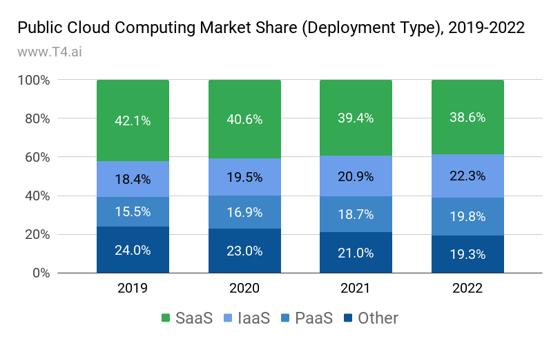
Source: https://www.t4.ai/industry/cloud-computing-market-share
Conclusion
As you can tell, each cloud computing model is appropriate for different businesses and business needs. And since each model has its pros and cons, it’s important to know what is more valuable to you and your company – control, customization, or convenience. And once you’ve made a decision, you need to find the right vendor that goes with your organization’s culture and ultimately helps increase your teams’ productivity and efficiency.
Next to IaaS, PaaS, and SaaS, there are also other emerging cloud computing models that might be of interest to you: Monitoring as-a-service (MaaS), Function as-a-service (FaaS), and Communication as-a-service (CaaS). Each of them is targeted at businesses who seek select services to remain competitive in a cloud-first market.
